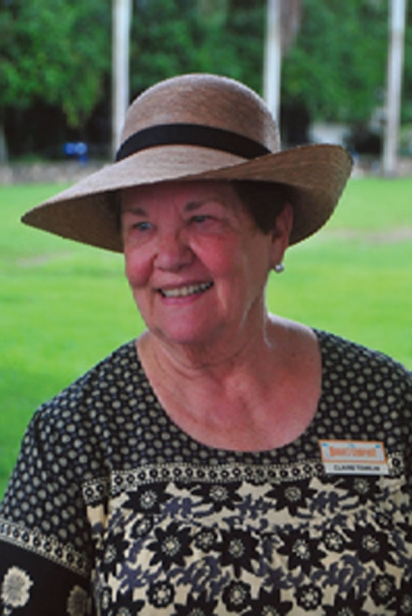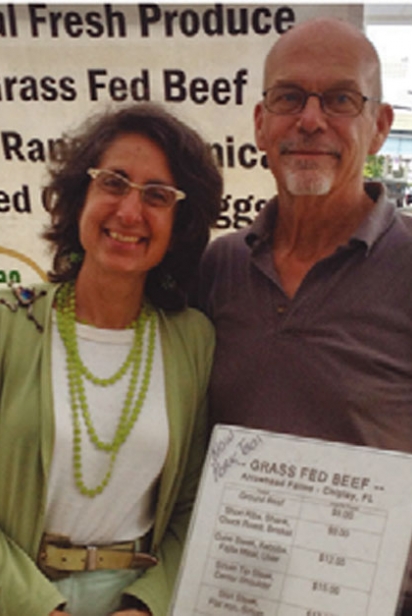Markets: More Than Meets the Eye
Being a vendor at a farmers market must be an easy gig – working a few hours on a Saturday morning at a park, chatting with friendly people, petting their dogs. “Customers say, ‘You sit here and sell produce – how hard can it be?’” says Carl Templer, manager of Urban Oasis Project at Southwest Community Farmers Market at Tropical Park. “It’s really hard work.” “It’s not an easy business. You’ve gotta get up early on weekends. Nobody sits,” says Gary Kareff, one of the co-managers of the Community Farmers Markets of South Florida. Then, there’s the weather. “Mother Nature’s gonna do what she wants,” Templer says. “Whether it’s the Oriental fruit fly, too much rain, too much heat … you have to get up, shut up, and get it done. Three weeks in a row we had an enormous rainstorm. Eight tents went over and every vendor scrambled to help, ankle deep in water.”
TRADE TIPS Markets have rules, like making sure tents have weights to prevent them from blowing away, one of the requirements co-manager Jerry Kugel of Community Farmers Markets insists on. “There are also details like insurance, signage, working with city regulations – there’s a lot more to running a market than you think,” he says. He, Kareff and their partner Jonathan Grotsky got into the business of running markets because they were – and still are – vendors: Kugel heads up Happy Dog Bakery pet treats, Kareff operates Farmers Market Honey, and Grotsky is chef/owner of the new JW Pastries in Davie. They say their perspective helps their successful markets and other vendors, too. For Kugel, salesmanship plays a big role in vendor success and offers this advice: “Stand up – customers want to see you. Put away your phone. Use an attractive banner for your booth.” Adds Kareff: “You have 3 or 4 seconds to catch the attention of a customer. People buy with their eyes. Be presentable!”
Thinking about selling at a farmers market? “Be honest,” says Kareff . “Do you have a viable product? Set realistic expectations about sales. Make sure you enjoy dealing with people. Be consistent in your product. Be there all the time.”
WHAT TO SELL? Good markets provide a good mix of local vendors: produce, baked goods, artisan foods, flowers, prepared foods and handcrafted items, like soaps and candles. “We’re always looking for grass-fed beef, fresh local fish, locally grown produce, fresh pasta,” says Grotsky.
Farmers market customers can get more out of their experience if they follow Templer’s tips: “Be there before items sell out. The early birds get the eggs.” If you or someone you know uses EBT/SNAP (food stamps), you can get double your money at Urban Oasis Project markets and others that take EBT. “Swipe your card for $20, get $40 in token that can be used for fruits and vegetables.”
A well-run market works for all, says Claire Tomlin of the Market Company. “Markets are a great way for people to test their products and get feedback,” she says. “I watched Zak the Baker get his start at Pinecrest market. There were lines of people waiting for him to show up,” she says. “Now he’s a superstar.”







